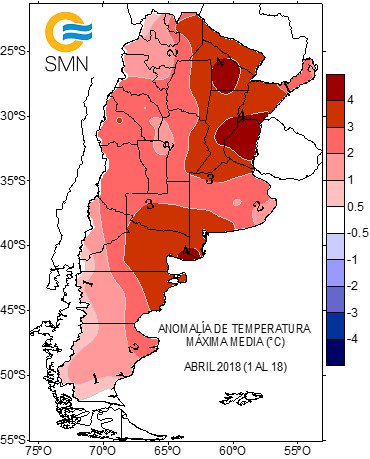Friday April 20th… Dear Diary. The main purpose of this ongoing post will be to track United States extreme or record temperatures related to climate change. Any reports I see of ETs will be listed below the main topic of the day. I’ll refer to extreme or record temperatures as ETs (not extraterrestrials)😊. Here is today’s main climate change related topic:
Current Global Strange Weather
Climate is merely the average of weather events over days, months and years. If a region has a stable climate inhabitants come to expect certain types of seasonal weather events over and over during a lifetime. Should climate start to change long timers will begin to complain of strange or odd weather. Worse, reliable weather for growing traditional crops will become a atypical perhaps leading to food scarcity. “Strange weather” has been occurring across the planet during April 2018, and I’m not writing about a rare tornado in one’s home town, or dry spell. Anyone with any weather sense can see how wacky the weather is getting. Today I thought that I would make a list of some current weather events so that you can be the judge.
First let’s drop by Europe, which has gone from the deep freeze to record warmth in just a few weeks:
Etienne Kapikian, a meteorologist with MeteoFrance, tweeted that Paris’s preliminary high of 83.7 degrees (28.7 Celsius) ranked as the fifth-highest April temperature there in 146 years of measurements.
Several locations in France set all-time April highs, MeteoFrance tweeted.
Here is a peak at the mega-ridge over Europe from this morning:

Here are some “Extreme Temperatures” or records set in France from yesterday 4/19/2018:
29.2°C Troyes, 27.8 25/4/2007
28.3 Roissy, 27.8 25/4/2007
28.0 Creil, 27.9 29/4/1955
27.9 Toussus-le-Noble, 27.1 15/4/2015
27.2 Nancy-Ochey, 27.1 25/4/2007
27.2 Rouen, 26.4 15/4/2015
26.7 Evreux, 26.1 29/4/2010
26.7 Deauville, 25.9 29/4/1955

Tx moyenne nationale de 26.6°C (et Tmoy 18.6°C) : 2e journée d’avril la plus chaude depuis l’après-guerre derrière le 30/4/2005 (26.9) !
Quelques records mensuels au nord (jusqu’à 31.1°C à St-Maur #IDF) et même en Corse !
An exceptionally hot 20 April, Tmax + 6 to + 14 °c/norm Tx national average of 26.6 °c (and Tmoy 18.6 °c): 2nd day of April the hottest since the post-war period behind the 30/4/2005 (26.9)!
A few monthly records in the north (up to 31.1 °c in St-Maur #IDF) and even in Corsica!

 SMN ArgentinaVerified account @SMN_ArgentinaARGENTINA ATRAVIESA EL ABRIL MÁS CÁLIDO DE LOS ÚLTIMOS 60 AÑOS.
SMN ArgentinaVerified account @SMN_ArgentinaARGENTINA ATRAVIESA EL ABRIL MÁS CÁLIDO DE LOS ÚLTIMOS 60 AÑOS. 


Durante abril el otoño prácticamente no se ha hecho sentir y las temperaturas se mantienen muy por encima del promedio normal para la época. + en https://www.smn.gob.ar/noticias/argentina-atraviesa-el-abril-m%C3%A1s-c%C3%A1lido-de-los-%C3%BAltimos-60-a%C3%B1os …
ARGENTINA crosses the hottest April of the last 60 years. 🌡️🌡️🍂 during April autumn has practically not been felt and temperatures are kept well above the normal average for the time. + In https://www.smn.gob.ar/noticias/argentina-atraviesa-el-abril-m%C3%A1s-c%C3%A1lido-de-los-%C3%BAltimos-60-a%C3%B1os …




No #tornadoes have been reported in Oklahoma in 2018, nearing a record wait: https://wxch.nl/2F0YG8o

 Climate Signals @ClimateSignals
Climate Signals @ClimateSignals

 Bill KarinsVerified account @BillKarins
Bill KarinsVerified account @BillKarins


 Zack LabeVerified account @ZLabe
Zack LabeVerified account @ZLabe
Compared to previous decades:
—> ~680,000 km² less the 2000s average
—> ~1,130,000 km² less the 1990s average
—> ~1,710,000 km² less the 1980s average

(If you like these posts and my work please contribute via the PayPal widget, which has recently been added to this site. Thanks in advance for any support.)
The Climate Guy


